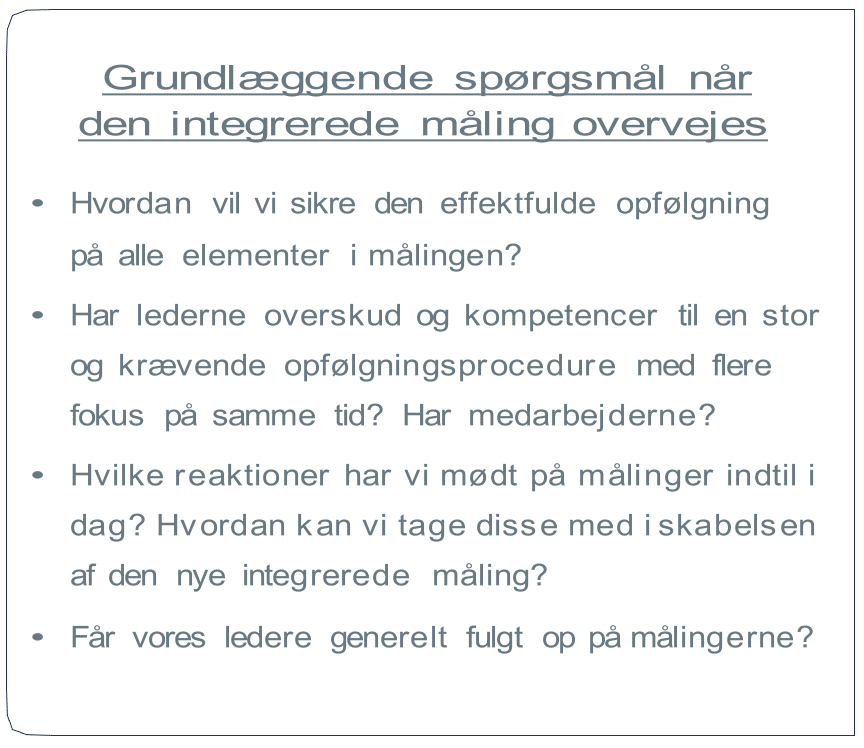Leadership assessment - HR managers and consultants are hungry for the right formula to measure and document leadership quality. This article gives you a starter formula: Clear purpose + definition of leadership = solid foundation for leadership assessment. While it seems simple, many organizations don't get started properly and end up with assessments that don't provide the answers they need. Get sharp advice on the purpose of leadership assessments, the definition of leadership quality and a unique insight into how Skanderborg Municipality approached their leadership assessment.
Find the right purpose
The first place to start when measuring and documenting leadership is with the question: "Why?". What exactly do we want to gain from measuring leadership? What is important enough for all our managers and employees to put their precious time and energy into uncovering the quality of leadership?
We start by defining the purpose of measuring leadership. Both to create the measurements that give us the data we need and to assess what kind of measurement we need to make and, most importantly, whether we need a measurement at all.
A common answer is: "So we get an overall picture of our organization's leadership strength". It's a good idea - especially in top management and HR - but it doesn't make it easy for individual employees and managers to relate to. A good answer might be: "The leadership assessment focuses on leadership and develops the leader based on the different functions in the leadership foundation. The follow-up on the leadership evaluation should contribute to a common leadership language, culture and practice". Or: "To get a data basis from which the manager can develop". For other organizations, it is the dialogues that are most important, and not an overall picture of the organization's/individual manager's leadership, which also determines whether the evaluation should be conducted qualitatively or quantitatively.
Define leadership quality in your organization
How do we measure leadership? Leadership assessments can be approached in many different ways. Perhaps you want to take the latest leadership research as a starting point and get to the heart of leadership by asking about all the elements that affect a leader's effectiveness and performance? Perhaps you want to define leadership quality based on the organization's own leadership foundation?
Or maybe you want to focus on some specific areas of leadership, such as whether the organization has effective leadership teams. Whether the leaders in the organization are versatile. That is, whether they are agile and can balance between several demanding but conflicting leadership competencies. Or it could be a study of how good managers are at collaborating across areas and disciplines in the organization.
It's crucial to consider what leadership quality is for your organization and which themes to measure to ensure that the measurement is aligned with the purpose of the assessment. Ask directly about specific themes, for example, by focusing on effective leadership teams. The following questions help to explore whether the focus person is able to set, run and develop an effective leadership team, according to research on effective leadership teams (Bang, Middelfart, Elmholdt & Molly-Søholm, 2015):
- To what extent do I have a clear picture of what my management team's most important task is?
- To what extent do I have a keen eye for the results my leadership team needs to deliver? Or questions that ask specifically about the leader's versatility, which according to research accounts for 50% of what makes leaders effective (Kaplan & Kaiser, 2006). In reality, ineffectiveness and dissatisfaction can be caused by both too little and too much of one resource or quality (Kaplan & Kaiser, 2013):
- To what extent do I feel I have a good balance between directing and supporting my managers?
- To what extent do I feel I have the right balance between strategic direction-setting leadership and focusing on day-to-day tasks that need to be done?
Which questions the evaluation should include depends on how you define leadership quality.
READ MORE ABOUT OUR EDUCATION
LEAD
offers certification in the development of agile leadership with the development tool The Leader's Versatility Index (LVI)
With a certification, you will be equipped to use LVI in development processes in your organization at individual, group and organizational level
Management quality in Skanderborg Municipality
In 2015, Skanderborg Municipality conducted an evaluation of the leadership quality of its 317 managers based on their leadership foundation. Here, 5,200 employees answered a questionnaire about their immediate manager, who also evaluated themselves and their supervisor. In this interview, HR Manager Runa Brøchner gives us her answers to the questions: "Why would you evaluate leadership in Skanderborg Municipality?" and "How do you define leadership quality?".
Why evaluate management in Skanderborg Municipality?
The overall purpose of the evaluation was to have a tool for dialog: "It's not so much the results that are important to us - it's more that you have dialogs about developing good leadership".
Here, the management evaluation should be a tool where you as a manager can subsequently enter into dialogues with your employees, manager, boss and management colleagues about how you view management and how you want to develop together. "I'm not sure we would get this dialog about leadership going if it wasn't helped along by the leadership evaluation as a snapshot to talk from".
How do you define leadership quality?
"I struggle a bit with the concept of leadership quality. Of course, the management evaluation shows whether you are a good manager - and thus the quality of management. But what our results say something about is whether you are a good leader in Skanderborg Municipality based on what we emphasize in leadership." In Skanderborg Municipality, the leadership evaluation is based on their leadership profiles "Strong Leadership", which describe which skills, work values and priorities are important prerequisites for good leadership in Skanderborg Municipality. "The profiles have been developed in processes where the contributors have been representatives from the individual leadership profiles from all areas of the municipality. Together, we have created a common language around good leadership." "It doesn't matter what we measure. We must measure what matches us. If we measure something that is completely detached from our management culture, it's like measuring pears and bananas. There must be a common thread in what we work with. When we have management profiles in Skanderborg Municipality, these are also the ones we want to measure when we assess management quality."
Skanderborg Municipality works with three strategic focus areas, which were also created in the profile process. "For example, within one of the themes, we thought we had come a long way in implementing the strategy. Here, we could see from the evaluation that the employees did not score as high as we had hoped. It therefore became a development area across the municipality, where we have launched several initiatives. We probably wouldn't have started these if we hadn't received data that told us there was a need for it." In this way, Skanderborg Municipality could also use the evaluation as a strategic management tool that can say something about which initiatives should be launched in relation to achieving the strategy. achievement of the strategy.
What advice would you give to other HR managers and consultants working with management reviews? I would give three pieces of advice:
- Consider how the evaluation can match the reality of the management situation.
"Next time we do the evaluation, we will consider whether there are some places where we can make it match the reality of management practice even better. For example, in the school area, there are some middle managers where there should perhaps be an opportunity for employees to also measure the school principal. There is a clear desire for this because they represent the entire school, and it is part of the culture here that this is how we work with school management." - Consider how the evaluation can match the language of management.
"We have had a very broad involvement in the design of the evaluation, including managers, union representatives, health and safety representatives and various employees. If you don't involve your organization a lot, it doesn't have a chance. They are the ones who must help to give ownership and carry the evaluation through. That's why we got a very good response rate this year compared to previous years. compared to previous years. It's not just a concept that has been foisted on us in Skanderborg. The organization itself has sat down and formulated each individual question, which has had a huge impact on how the evaluation was received." - Ensure proper follow-up.
"We have developed many different tools that managers could use locally for information, interpretation of reports, reflection questions, processes at staff meetings, etc. In addition, it is essential that you have an HR function that can also professionally support the processes throughout the evaluation process.Especially in relation to Especially in relation to thefollow-up, where the consultants have carried out management coaching after the evaluation and sparring on how to prepare your managers and employees for the dialogue - also on how you as a manager can tackle your own defense and be open to thefeedback thatcomes".
So, when formalizing management evaluation, you need to create the right foundation and direction for the evaluation so that it measures what the organization needs. Start with the questions:
- Why is it that we want to measure?
- What is management quality for us?
Basic considerations and looking at your own organization when making the choice:
To ensure the best conditions for a good start to the new survey in terms of engagement and response rate, it is crucial that the last survey was conducted professionally and with good follow-up afterwards.




